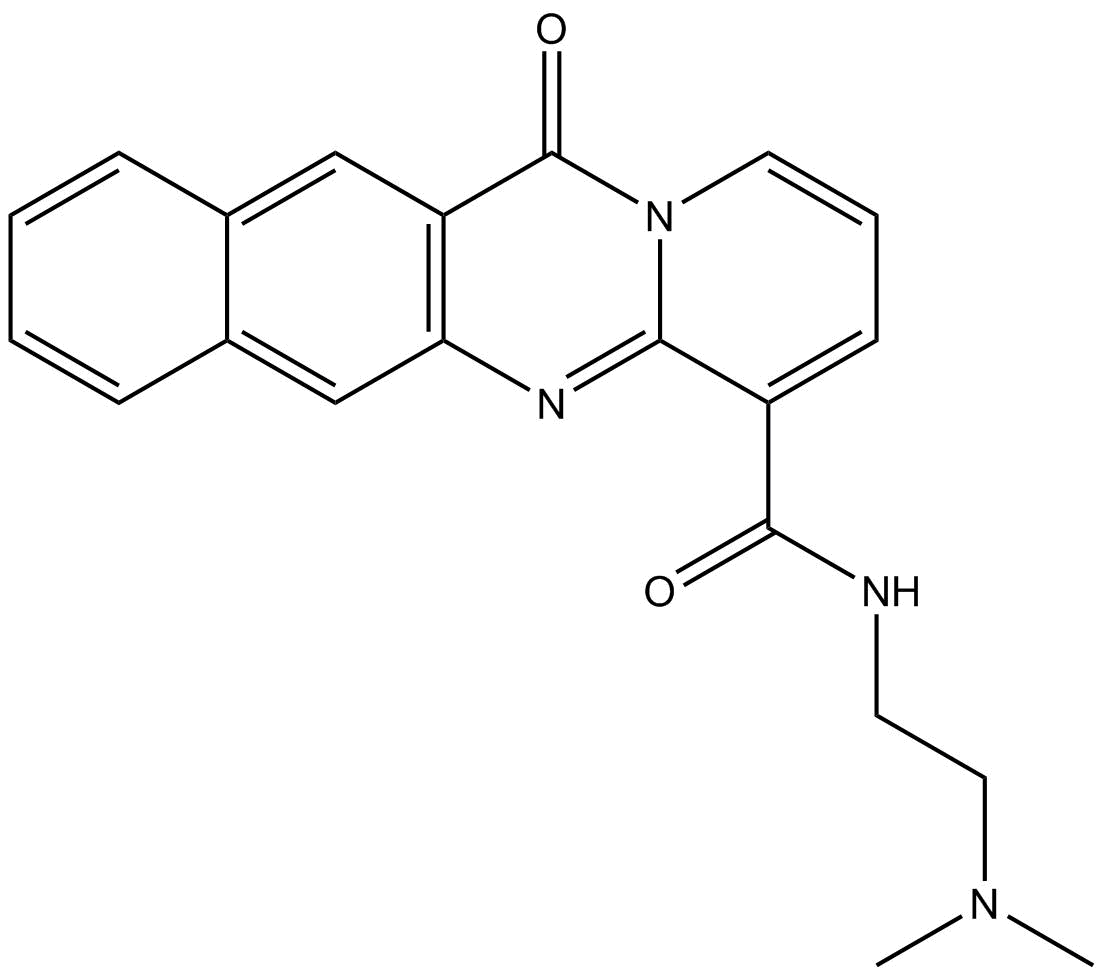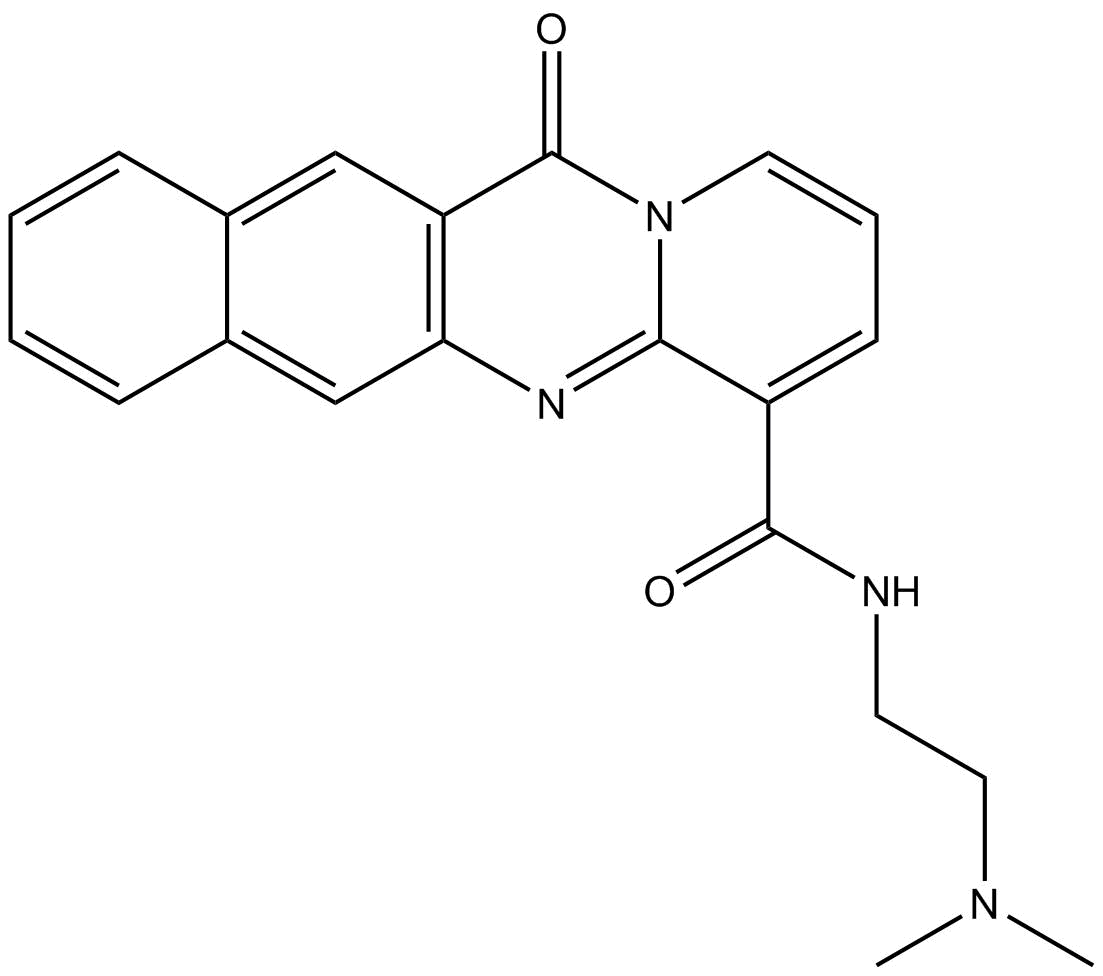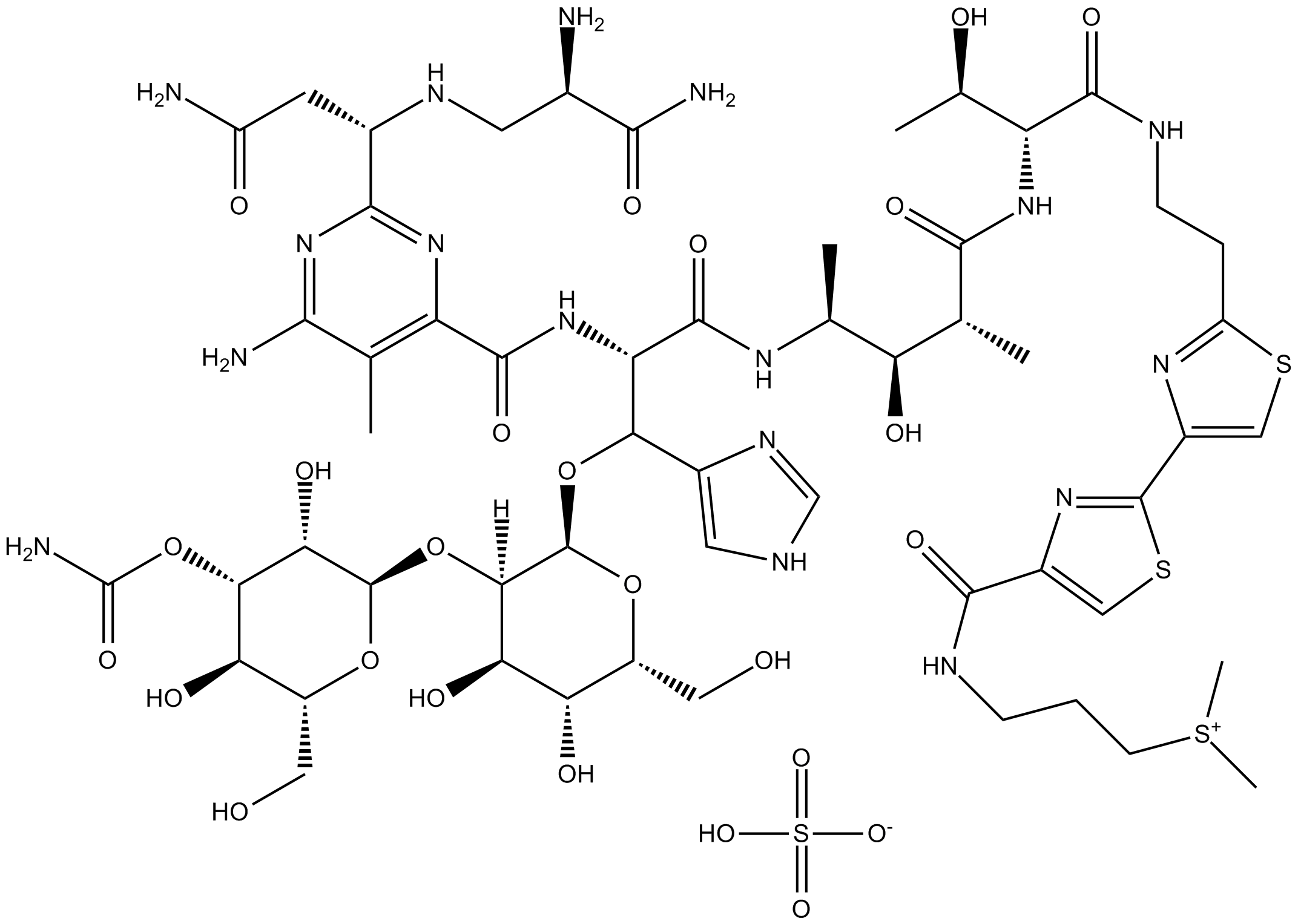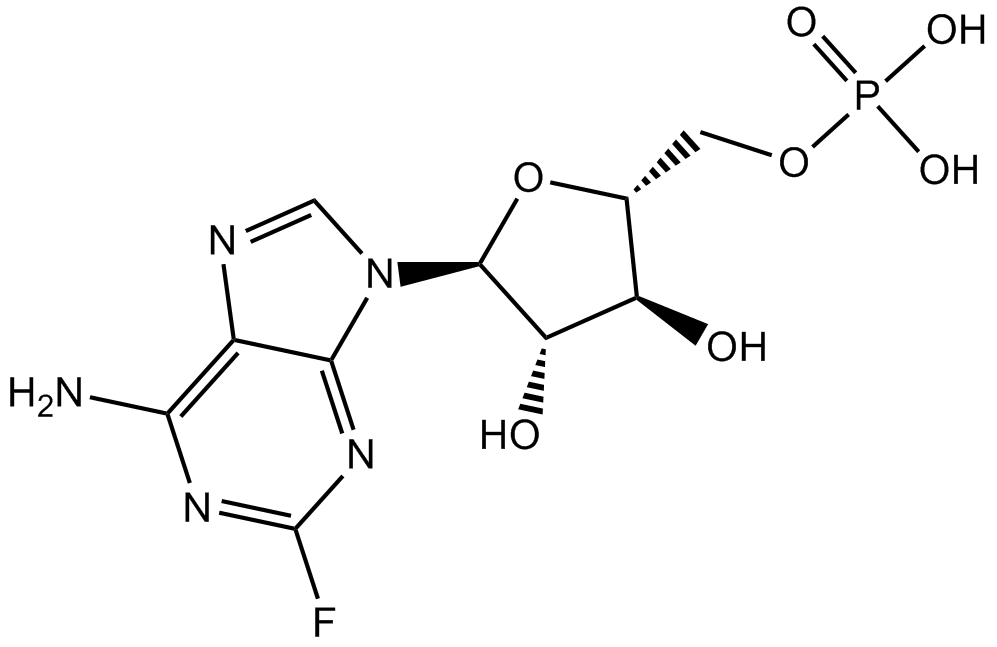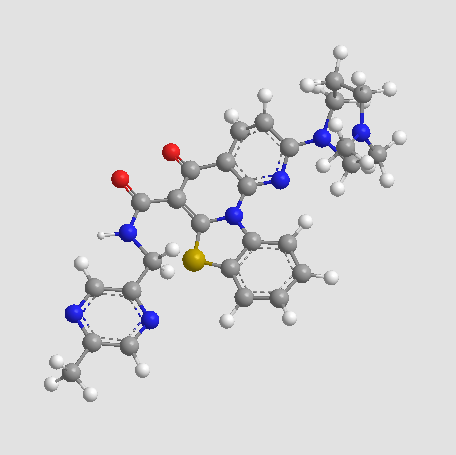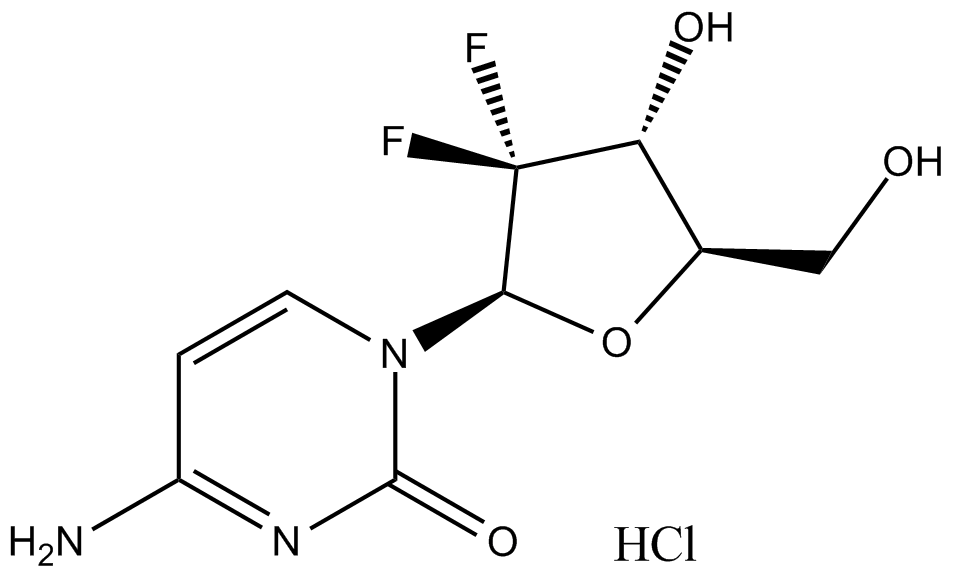BMH-21
BMH-21 (CAS: 896705-16-1) is a planar heterocyclic small molecule DNA intercalator that selectively inhibits RNA polymerase I (Pol I)-mediated transcription. It preferentially inserts into GC-rich double-stranded DNA regions, leading to Pol I blockade and subsequent degradation of its catalytic subunit, RPA194. BMH-21 exhibits cytotoxic activity across various human cancer cell lines independently of the p53 status, disrupting nucleolar integrity and RNA synthesis. Furthermore, BMH-21 promotes p53 expression in epithelial compartments of human prostate tissues, demonstrating tissue permeability and highlighting its applicability in anticancer research.
| Physical Appearance | A solid |
| Storage | Store at -20°C |
| M.Wt | 360.41 |
| Cas No. | 896705-16-1 |
| Formula | C21H20N4O2 |
| Solubility | insoluble in EtOH; insoluble in H2O; ≥7.4 mg/mL in DMSO |
| Chemical Name | N-(2-(dimethylamino)ethyl)-12-oxo-12H-benzo[g]pyrido[2,1-b]quinazoline-4-carboxamide |
| SDF | Download SDF |
| Canonical SMILES | CN(C)CCNC(C(C1=Nc2cc(cccc3)c3cc22)=CC=CN1C2=O)=O |
| Shipping Condition | Small Molecules with Blue Ice, Modified Nucleotides with Dry Ice. |
| General tips | We do not recommend long-term storage for the solution, please use it up soon. |
Quality Control & MSDS
- View current batch:
Chemical structure
